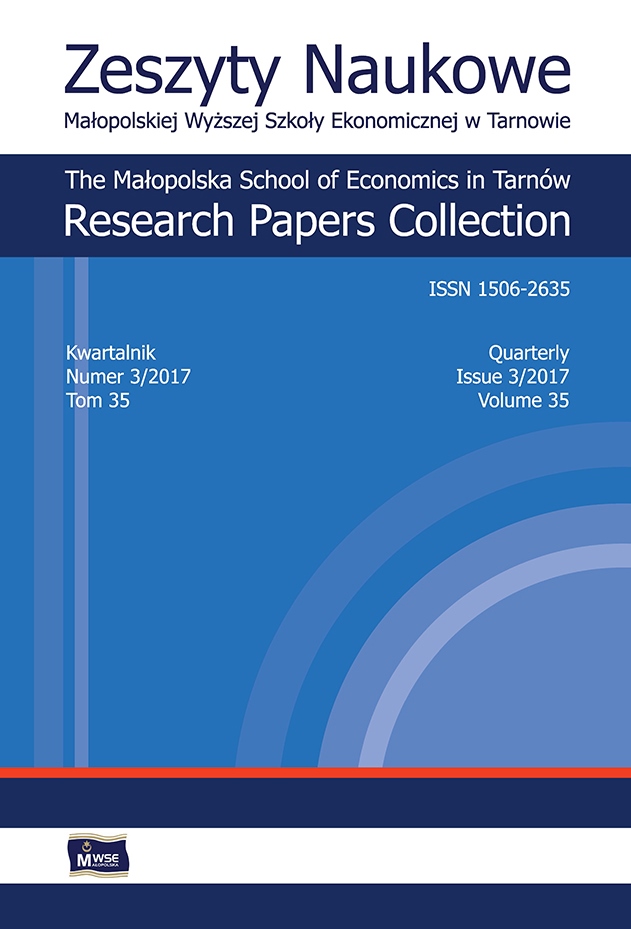Abstract
Carriage of goods by road continues to remain at a high level. This phenomenon, apart from positive aspects for the economy, has also negative and costly consequences, especially in the transport of dangerous goods. These goods, due to their nature, pose a serious threat to the environment and human health. The rules of transport supervision of such goods regulated by relevant standard documents and guidelines approved in the European Union and in Poland. Despite the increased security measures, adverse events with negative social, environmental and financial consequences often occur. This situation requires action in order to minimise the risk of carriage and improve its safety. One of such actions is the introduction of load monitoring from the recipient to the sender. Vehicle tracking systems are available on the market that use satellite navigation systems. Their purpose is, among others, to determine vehicle location, fuel control or anti-theft protection. Unfortunately, they do not provide integrated monitoring which takes into account the multifaceted nature of the problem and, above all, the psychophysical assessment of the driver and its impact on minimising risk as well as minimising the effects of terrorist acts. The paper presents the concept of an integrated system that takes into account the current state of solutions in this area. The premise of the system development, its functioning, information flow between its participants and the role of the human factor in the system as well as the benefits of its implementation are discussed, the example being LNG transport. Furthermore, attention has also been drawn to the socio-economic implications of the functioning of the system as an essential element for increasing the level of safety in the carriage of particularly dangerous goods.
References
Antonowicz, M., Syryjczyk, T., Faryna, P. (red.). (2015). Biała księga: kolejowy transport towarowy 2015 [online, dostęp: 2017-07-26]. Warszawa: Forum Kolejowe – Railway Business Forum. Dostępny w Internecie: http://www.rbf.net.pl/pliki/file/RBF_BK_KTT_FINAL.pdf.
View in Google Scholar
Bęczkowska, S. (2014). Ocena i minimalizacja ryzyka w drogowym transporcie towarów niebezpiecznych. Praca doktorska. Warszawa: Oficyna Wydawnicza Politechniki Warszawskiej.
View in Google Scholar
Bęczkowska, S., Grabarek, I., Choromański, W. (2013). Model oceny ryzyka w drogowym transporcie towarów niebezpiecznych – wybrane zagadnienia. Prace Naukowe Politechniki Warszawskiej, 96, 77–87.
View in Google Scholar
Bęczkowska, S., Grabarek, I. (2011). Znaczenie ergonomicznej jakości układu kierowca–cysterna–otoczenie w kształtowaniu bezpieczeństwa przewozów. W: E. Górska (red.). Współczesne i przyszłe wyzwania ergonomii (s. 143–153). Warszawa: Oficyna Wydawnicza Politechniki Warszawskiej. ISBN 9788393098316.
View in Google Scholar
Bęczkowska, S., Grabarek, I. (2012a). Analysis of factors determining ergonomic conditions of driver’s workplace and safety in transport of dangerous goods. Archives of Transport, 24(3), 297–306.
View in Google Scholar
Bęczkowska, S., Grabarek, I. (2012b). Czynnik ludzki w ocenie ryzyka w transporcie towarów niebezpiecznych. Technika Transportu Szynowego, 9, 1–10.
View in Google Scholar
Evans, G.W., Karwowski, W. (1986). A perspective on mathematical modeling in human factors. W: W. Karwowski, A. Mital (eds.). Applications of Fuzzy Set Theory in Human Factors (s. 3–28). Amsterdam: Elsevier. ISBN 9781483294360.
View in Google Scholar
Jamroz, K., Smolarek, L. (2012). Analiza wpływu zmęczenia kierowców na ryzyko wypadków na drogach krajowych. Drogownictwo, 4, 121–126.
View in Google Scholar
Jamroz, K., Smolarek, L. (2013). Driver fatigue and road safety on Poland’s national roads. International Journal of Occupational Safety and Ergonomics, 19(2), 297–309.
View in Google Scholar
KGP. (2014). Wypadki drogowe w Polsce w 2013 roku [online, dostęp: 2017-05-20]. Warszawa: Komenda Główna Policji. Dostępny w Internecie: http://statystyka.policja.pl/st/ruch-drogowy/76562,Wypadki-drogowe-raporty-roczne.html.
View in Google Scholar
Kopczewski, R., Nowacki, G., Krysiuk, C. (2016). Projekt struktury funkcjonalnej systemu bezpieczeństwa przewozu drogowego towarów niebezpiecznych. Autobusy, 10, 45–52.
View in Google Scholar
Mamdani, E.H., Gaines, B.R. (eds.). (1981). Fuzzy Reasoning and Its Applications. London: Academic Press. ISBN 0124677509.
View in Google Scholar
Martorell, S., Soares, G.C., Barnett, J. (2014). Safety, Reliability and Risk Analysis: Theory, Methods and Applications. Boca Raton: CRC Press. ISBN 9781482266481.
View in Google Scholar
Materiały informacyjne Gaz System, www. gazsystem.pl [dostęp: 2017-05-20].
View in Google Scholar
Matthews, G., Desmond, P.A., Neubauer, C., Hancock, P.A. (eds.). (2012). Handbook of Operator Fatigue. Burlington, VT: Ashgate Publishing Company. ISBN 9780754675372.
View in Google Scholar
NIK. (2012). Wykonywanie zadań przez administrację publiczną w zakresie bezpieczeństwa przewozu towarów niebezpiecznych: informacja o wynikach kontroli [online, dostęp: 2017-05-20]. Warszawa: Najwyższa Izba Kontroli. Dostępny w Internecie: https://www.nik.gov.pl/plik/id,3552,vp,4524.pdf.
View in Google Scholar
Raport badań stateczności bocznej cystern Transportowego Dozoru Technicznego. (2017).
View in Google Scholar
Rutkowski, L. (2017). Metody i techniki sztucznej inteligencji. Warszawa: Wydawnictwo Naukowe PWN. ISBN 9788301157319.
View in Google Scholar
Statystyki UE. (2017), www.eurostat.eu [dostęp: 2017-05-20].
View in Google Scholar
Szarata, A. (2013). Modelowanie podróży wzbudzonych oraz tłumionych zmianą stanu infrastruktury transportowej. Kraków: Wydawnictwo Politechniki Krakowskiej.
View in Google Scholar
Szopa, T. (2016). Niezawodność i bezpieczeństwo. Warszawa: Oficyna Wydawnicza Politechniki Warszawskiej. ISBN 9788378145554.
View in Google Scholar
Yager, R.R., Filev, D.P. (1995). Podstawy modelowania i sterowania rozmytego. Warszawa: Wydawnictwa Naukowo-Techniczne. ISBN 8320419093.
View in Google Scholar
© Copyright by Małopolska School of Economics in Tarnów. The articles are available under the Creative Commons Attribution NonCommercial-NoDerivatives 4.0 International License


